Last week, Jerry Smith had to cut our meeting short at Stirling’s, as he was due to give the VC a tour of the Rebel’s Rest site. “OK if I tag along?” I asked. He assented and we hopped into his truck.
The first thing he showed we was a neat stack of bricks taken from the various fireplaces. Smith had spent done time tracking down the stamps. “They’re not all from the same company, which is curious.” No doubt there was some reuse over time.

I was poring over the bricks when the Vice Chancellor showed up. Smith pulled some plans out of his truck, and a baggy full of what? I couldn’t tell. Over we walked to the covered stand where the Rebel’s Rest porch had stood. “The wisteria is coming back strong,” said John. University archeologist Sarah Sherwood had joined us. “It’s already had to be cut back,” she laughed. In the meantime, Smith pulled out his plans.
“When Fairbanks built Rebel’s Rest, he used logs that had been sawn,” Smith said. He pointed to a long log set horizontally on top of a foundation right in front of us– it was clearly not dawn but hewn. “All in front of that,” he continued, emptying out the baggy, “was this.” Little bits of glass spilled out. Melted glass, he noted. Probably from the fire that burned down the Polk residence that occupied the site before the war.

In the area in front of the hewn Polk log there are modern pillars of poured cement, dating to 2002-3, when PPS workers had to crawl under Rebel’s Rest to set up supports and run wires and vents and such. Some are “signed.”

I suppose my favorite modern item is a time capsule the guys put under the porch. Who knew that every time we crossed the threshold into Rebel’s Rest in the past decade, we were walking over it?

On the right hand side, below where the kitchen had been, are the remains of a size able room, “Is that a natural outcrop down there?” asked the VC. Indeed, a large rock with a still running spring coming out from under it. “We even found the sump pump down there,” said Sarah, “still in functioning condition.” I wish I had asked to see it. The stone walls of this room showed evidence of burning on the wall. Not from the recent fire, Smith noted, or the 1860s one. A mystery.

There are lots of mysteries, in fact. For instance, right beside the spring, on a higher level, a carefully excavated square revealed what first seemed to be a staircase… which then ended in a perfect cement wall. Why? “How old is cement, anyway?” I asked. “Roman,” replied Smith. (Note to self: don’t ask stupid questions in front of the VC)
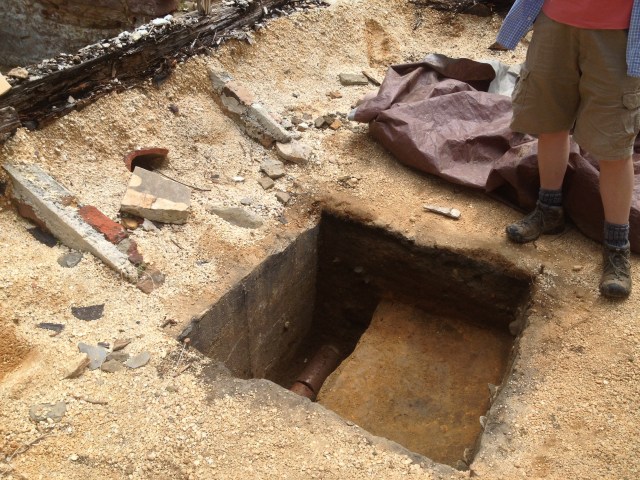
Closer to the parlor, where the old staircase had been, was this circular pattern of brick. What was it? “We have a lot more to excavate in this area,” said Sarah, “so we can’t just dig this up, much as we’d love to.” It’s interesting how part if the brickwork runs one edgy, and the other side goes another way. “Right now,” she goes on,”my pet theory is that it’s a spiral staircase to a Yankee speakeasy.” They’re saving this excavation for last–“dessert,” says Smith.
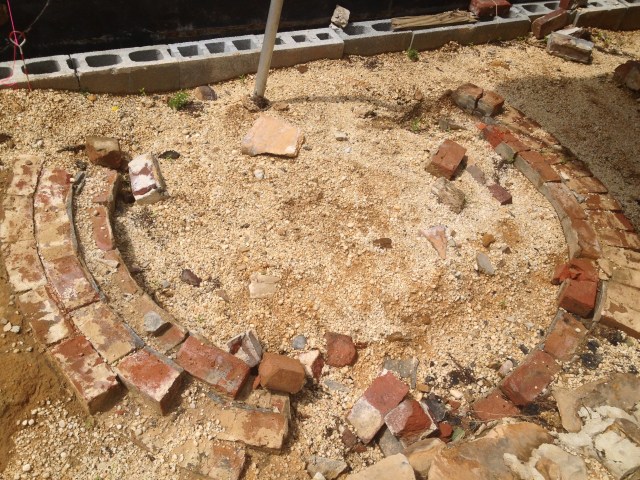
There are quite a few other items of interest in the vicinity, just beyond the housestead. What seems clear is that Fairbanks built on the old Polk home, which was probably not a humble one. All around us evidence, too, of livestock and poultry. There’s more in the woods toward Fulford, but I declined to go. The grass was tall and certainly full of chiggers, after all, and I hadn’t exactly been planning for a walk in the woods.
The Messenger reports this week that the archeology team is looking for volunteers– from what I’ve seen, there’s a lot to be uncovered still! Below are a few more pictures from my stroll around the site.


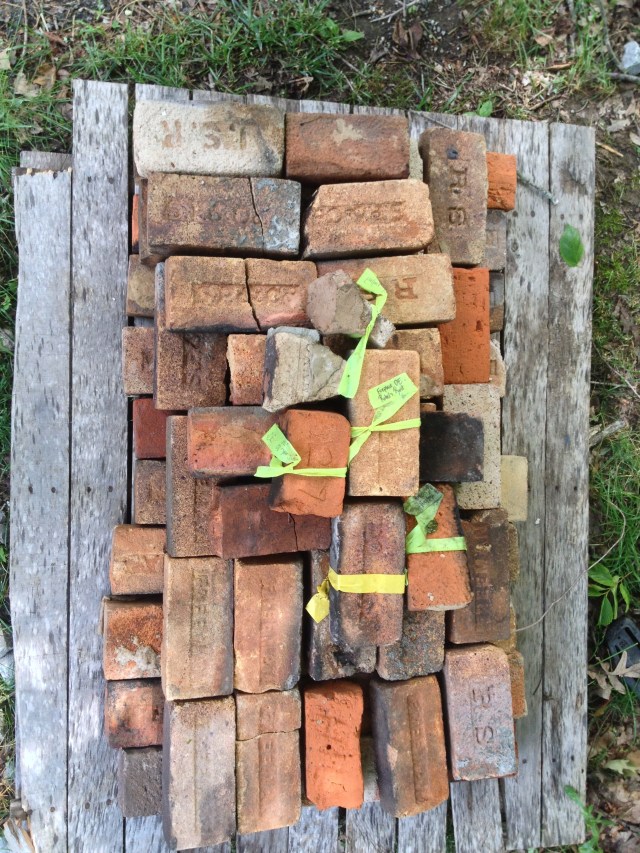
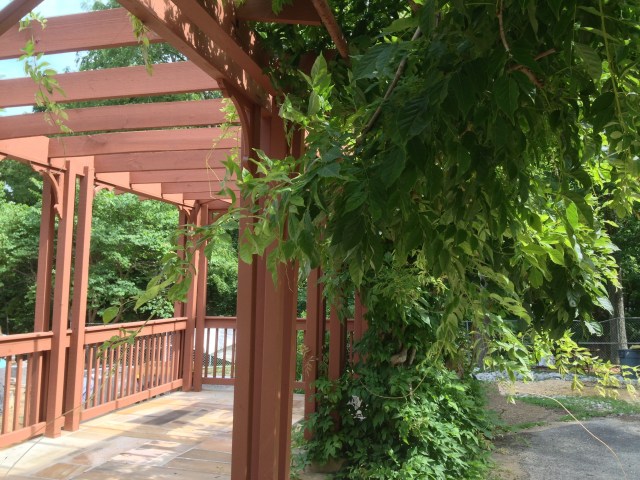
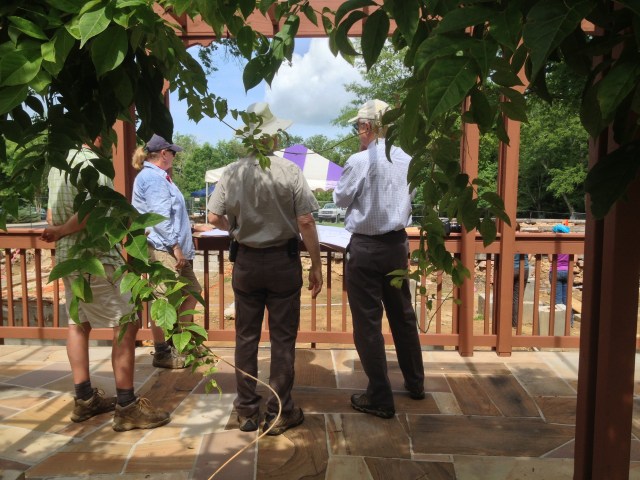


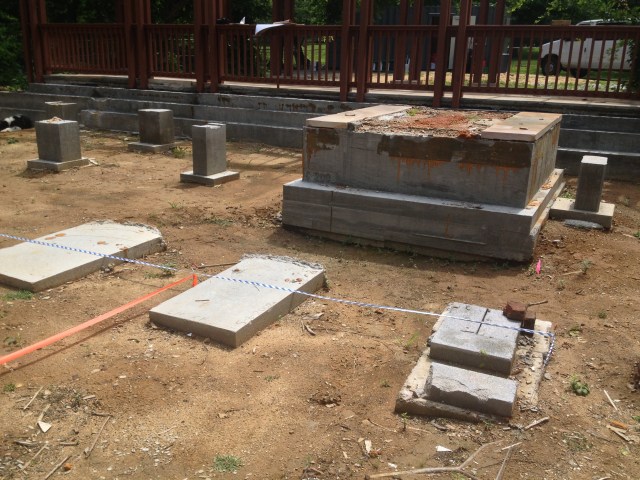
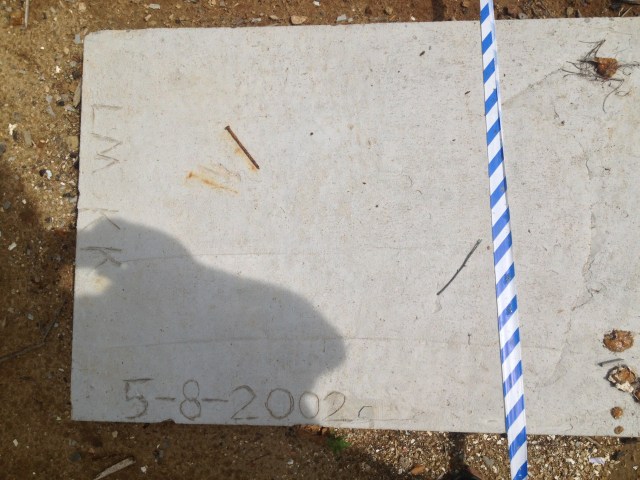


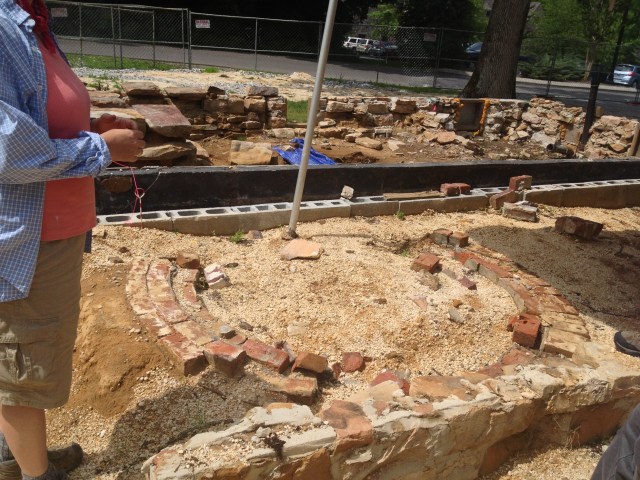
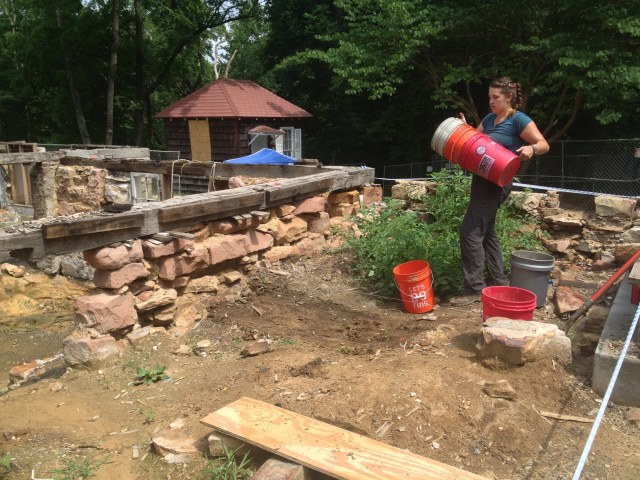


Thanks for the post. I especially love the question about cement.
The forlorn yet apparently voracious “giant” wisteria draping the bare ruin’d trellis where late the sweet Mrs. Fairbanks, her Rebel (albeit natively Yankee!) husband and their family “rested” (and no doubt sometimes sang) reminds one of Charlotte Perkins Gilman as much as of William Shakespeare: fulsome yet, paradoxically, lissome as is its beauty, it seems to have devoured not only the physical but the memorial remains of the family’s habitation, and those of succeeding generations, in relation to whom the honorable history of that ethically ever-adaptive Reconstruction (Arthur Ben Chitty’s provocative usage) has also been devoured by the University’s political refusal, masquerading as professional, to provide for its rehabilitation after last summer’s fire. Half a century ago, my own Yankee parents surprised themselves by allowing their provincial prejudices to be liberated by the historic witness of Rebel’s Rest. Now, in this week when the malevolence of a racialist sociopath in South Carolina has led, first, to expansive magnanimity by his victims’ survivors then, overnight, to self-righteous historical revisionism by their political exploiters, it is heart-wrenching that the University of the South has facilitated the removal of what might have been an icon of a “more excellent way” (1st Corinthians 12/13) of moving beyond our nation’s all too current unpleasantness.
William McKeachie C’66
Good to hear from you after so long, William. Still, it’s interesting to see what was underneath RR. We agree, to be sure, on the powerful display of true Christian magnanimity from the survivors of the shooting. While I’m not really very sorry to see the Confederate battle flags coming down and put into the museums they belong in, I am sorry to see the conversation descend to a stale discussion over semantics and symbolism. But what do you mean that a restored RR might have been an icon of a more excellent way?
As always, Chris, your response is thoughtful and fair-minded and is appreciated by yours truly, avid reader that I am of your Yeatsian blog — I who, like Yeats’s friend, must acknowledge that my “work has come to nothing.” Yes indeed, the archaeological revelations you have vividly set forth are historically valuable fruits of what, nevertheless, could have been but a temporary dismantling of Rebel’s Rest before an eventual reconstruction more symbolically valuable than any heretofore. In the late 1960s, my parents, thanks in large measure to Ned McCrady, Andrew Lytle, “Red” Lancaster and above all the rehabilitation at that time of Rebel’s Rest, came to an appreciation of “the other history” of these United States than they, from their Yankee perspective, had previously encountered (other than in caricature). Post-bellum faithfulness to something more significant than a “Lost Cause” — faithfulness lived and honored in decades’ long, incremental ethical change through continuity on the part of the Fairbanks family, as subsequently by the University itself — was “the more excellent way” sacramentally symbolized until last July by the 1970s façade in its visibility from University Avenue, but now, according to the earliest post-fire official pronouncements, sacrificed to professional/institutional correctness and the putative “right side of history.” Ned McCrady the elder would surely have identified such aggressive erasure of real history as equivalent to the notion that Zero is a Number!